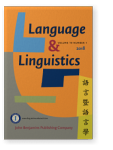Vol. 19:1 (2018) ► pp.80–116
The partial productivity of schematic idioms in Chinese
Evidence from speakers’ judgment
Idiomatic expressions are generally manifested as lexically fixed. Yet some expressions allow lexical variations in their open slots and thus show certain degree of productivity in actual use. How young children acquire the productive use of idiomatic expressions, however, has rarely been addressed in current literature. The present study explores the developmental trajectory in learning idiom productivity by targeting the quadra-syllabic schematic idioms in Chinese. Results of two Graded Acceptability Judgment tests showed that acquisition of the selective productivity of schematic idioms may undergo an interactive process shaped by its token frequency, structural complexity, inherent semantic relation and the chunk effect of its open morphemes at different age levels. Findings in the studies are further discussed in relation to the emergentist model in idiom learning.
Article outline
- 1.Introduction
- 1.1Chinese schematic idioms
- 1.2Learning of constructional idioms – Usage-based account
- 2.Distributional analysis of schematic patterns in Chinese – XAXB, XAYB and AXBY constructions
- 2.1XAXB construction
- 2.2XAYB construction
- 2.3AXBY construction
- 3.Current study
- 3.1Study One
- 3.1.1Variables
- 3.1.2Materials
- 3.1.3Participants
- 3.1.4Procedure
- 3.1.5 Scoring
- 3.1.6Results
- 3.1.7Discussion of Study One
- 3.2Study Two
- 3.2.1Variables
- 3.2.2Materials
- 3.2.3Participants
- 3.2.4Procedure
- 3.2.5Results
- 3.2.6Discussion of Study Two
- 3.1Study One
- 4.General discussion
- 4.1Input frequency
- 4.2Structural complexity and internal semantic relation
- 4.3Chunk effect of open morphemes
- 4.4Empirical evidence of schematic idioms as constructions
- 4.5Emergentist model on idiom learning
- 5.Conclusion
- Acknowledgements
- Note
- Abbreviations
-
References
For any use beyond this license, please contact the publisher at [email protected].
